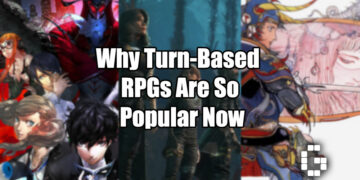With Cowboy Bebop out today on Netflix, there’s a lot to love if you’re a fan of the iconic 90s space noir. But while the final product is out now, we also caught up with Andre Nemec, the series showrunner as well as the cast, John Cho (Spike Spiegel), Daniella Pineda (Faye Valentine) and Mustafa Shakir (Jet Black) to talk what it was like working on an adaptation of one of the most iconic anime of all time.
Andre Nemec talked a lot about his love for the original Cowboy Bebop, as well as the challenges working on the Netflix series would bring. One of them, it turns out, was getting the tone.
“It was a trick, threading the needle of the tone of Cowboy Bebop is tough. It’s a noir but it’s a western, but it’s a buddy cop movie from the 80s, but its a sci-fi thriller, it was tough”, Andre says.
“I think part of the noir that comes out of it is in the storytelling itself and building on the strength of the foundation of the stories that we broke in that room and the scripts that were crafted”, he continues. “From that we were able to know that we were on really strong footing storytelling wise to draw noir, if that makes any sense”.
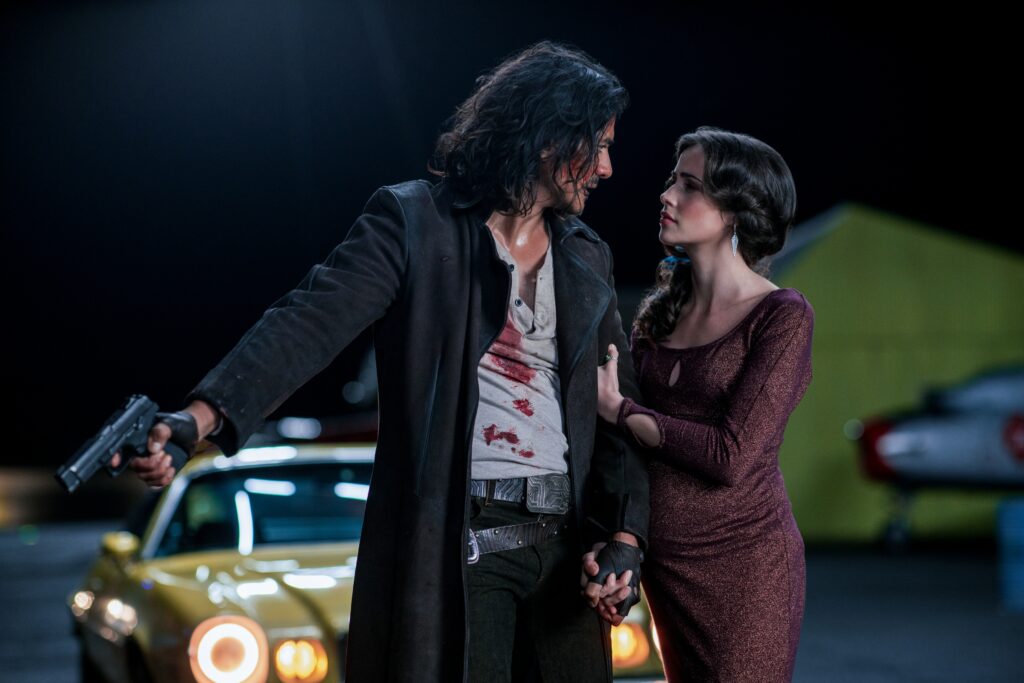
That being said, it’s not like Andre set out to make a 1:1 recreation of the anime. Instead, Andre says that the changes are for the fans to experience something new.
“I think living in the spirit of the anime meant taking things that weren’t broken and not trying to fix them”, Andre says. “That blue suit’s pretty awesome, we don’t need to change that. That yellow couch works, why would we change that. The ship is cool”.
“I think there’s a lot of things that work, but at the same time not wanting to do a 1:1 translation. I wanted to be served, if I were a fan, a different meal”, Andre says. “I would want to experience the ongoing adventures and get more time with the Bebop crew, but not know what was gonna happen before it happens if I was a fan. For those that weren’t fans, that ability to deliver a few 1:1 moments from the anime so that those that had never seen the anime could actually have those experiences that I had while watching the anime, that were so profound at the time that I watched the anime”.
New Ways To Look At Old Characters

One of these changes would be to Vicious- rival of Spike Spiegel and his personal unending nightmare. The anime was very conservative with its use of the character- he appears for a grand total of five episodes, along with Spike’s love interest Julia. However, Andre explained the reason the anime has such gratuitous use of the character that he’s even in their Lost Session vignette.
“Great heroes are made by great villains. I love a good villain story. It was important to me to tell the story of Vicious- why vicious, what of vicious, how come vicious, what made vicious? and to really get under the skin of that character”, Andre says.
“When I look at a great hero and I look at a great villain, I often think about the villains perspective which is “if you ask Vicious, he’s the aggrieved party and Spike Spiegel is the villain. And I think its important to understand a bit of that perspective and then as important to me was telling the story of Julia- and being able to give that character her own agency by which she controlled her own destiny and to some degree didn’t need to be rescued by anyone- she was gonna rescue herself. I loved getting under the skin of both of them and all of it really came from mining what was and what existed already in the anime and expanding upon the essence of what was there”

It wasn’t just Vicious and Julia though- one other character takes a big change, which is Mustafa Shakir’s interpretation of Spike’s partner, Jet Black. While the original anime character was a walking Film Noir trope- gruff ex-detective with a difficult past, Andre’s vision of him sees him with a much clearer motivation: His wife left him for someone else, and now he wants to still be there for his daughter the best he can.
While the chords might be different, Andre says they all still play the same song- the very essence of Jet as a character.
“I think to me, living in an adaptation and living in a time 20 years after the original show, to me the character of Jet, the essence of Jet and the thing I wanted to mine from Jet is that he’s an eternal optimist.”, Andre says. “The ship doesnt have fuel, the bounty got away, Spike won’t do his chores, and yet somehow Jet is a character who consistently has this outlook which is beautiful on it: “We’ll get the next one. It’s all gonna be ok” “.
“In meeting Mustafa, I always described Mustafa as a man who’s imposing, and wonderful and tall, and he’s got this heart full of jelly beans inside him. And it was seeing this it was like, “that’s Jet Black, that’s who that guy is, that guy is the eternal optimist”. And he’s the glue in that family for that reason”
Working On Cowboy Bebop
He also talked about what Cowboy Bebop means specifically to him- over the years a lot of people have their own interpretations of the anime, and what’s “the spirit of Cowboy Bebop”:
“The anime itself- I was very moved by the poetry of it.”, Andre says.” There was something so eclectic and raw about it at its core, in its soul- that to me, it was fascinating working on the show, pulling together a writers room with a bunch of people who were fans. It was amazing how if you asked what’s your favorite episode and why, how many different answers you get and how many different things were loved and that was part of trying to capture that spirit of this iteration of Cowboy Bebop was, and I’ve heard it from a couple of different people along the way, people like different episodes”.
“People have said already “you know my favorite episode is…” and they’re different. And to me that’s kind of the beauty of Cowboy Bebop because we all brought into it our own experiences and walked away with our own experiences of it. And I think for people who are real fans of the show, they will bring their experiences of Cowboy Bebop to this and I think they will find something that they will mine- “oh they got that right”- there’ll also be times where I’m sure they’ll be like “well they got that wrong”. But I think a lot of it is- the poetry of it leads to our own individual experience of it”
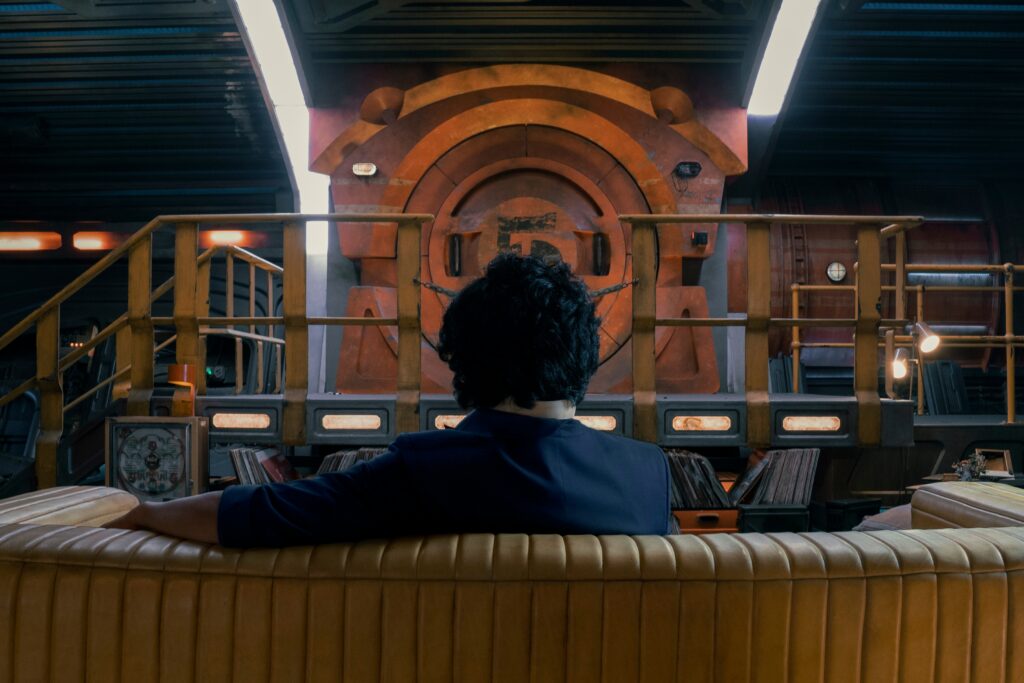
Of course, Andre isn’t hiding behind “everyone has their own interpretation” as a way to cut down on work. According to him, a lot of work was put into getting the visual look of the Netflix Cowboy Bebop series to be worthy of its anime counterpart.
“I think a lot of it was making sure that everything in the frame was worthy of Cowboy Bebop, it was worthy of that title”, he says.
“Every piece of background, that set deck, the painting on the walls, the props that were in frame, the outfits, even down to the lensing and the lighting, everything was about really looking at every frame that we were capturing daily, and saying “is this Bebop? how do we Bebop this up?”
“And I feel like that care and love that went into it really comes through because we had so many people that were fans of the show working on the show that there was always somebody who was like “oh I don’t know, maybe we should…” and we’d be like “okay get on that”. It really was just about capturing the Bebop-ness”.
Becoming Space Cowboys
One of these big fans of the original Cowboy Bebop on the Netflix set is Mustafa Shakir himself.
“Well, I mean, I didn’t feel a whole lot of pressure but I felt a lot of honor and reverence for the material, and that was shared with everyone collectively. Because we love it so much we did put that pressure on us a little bit but in a good way”, Mustafa says. “Because that was the case the costume department supported my interpretation of Jet Black so it was a good situation”.
Despite not being long-term fans like Mustafa, Daniella and John were equally mesmerized by the source material once they did their research.
“Mu (Mustafa) had watched the anime and was familiar with it, John and I had not seen or heard of it”, Daniella says. “I had heard of Cowboy Bebop but I’d never watched it until the opportunity came to play Faye Valentine and then I immersed myself in the anime and was very, very struck by how contemporary and cinematic the anime was”.

“I had not seen the anime before the role came to me and then I saw it and it was just really exciting”, John says. “The opening sequence is enough to hook you and then you get into this world that’s completely original, as a movie lover it was also just an interesting blend of so many types of genres, it was just so compelling and funny and romantic, and daring, you know?”
The advantage of making a show as visually bold as Cowboy Bebop is the opportunity to work on plenty of interesting shots. Mustafa’s favorite was the opening scene of the Netflix Cowboy Bebop series- a dynamic casino heist, entirely new to the series.
“I like the casino scene. Its obviously a hard question but the casino scene is really cool especially because its the kickoff point and the action is ramped up”, Mustafa says.
“If you’ve seen the season theres a shot in the Londes episode where I come out and its just one of those- you don’t get to do many of these as an actor, just a really long steadycam shot, where I come out of the building and we’re doing this memory piece, and end up with Julia and its a dream sequence and there’s all kind of extras that had to be coordinated”, John says. “There’s this particular type of satisfaction where you could get a steadycam shot like that done”.

The cast also talked about one more of their castmembers who wasn’t at the session- the Corgi that plays Ein. According to Daniella Pineda, carrying the dog was practically a stunt in and of itself.
“The writers decided to bestow Faye Valentine with most of the Corgi scenes and interactions”, Daniella says. “I’ve said this before but it’s almost like the dog was deliberately trying to be heavy, [tghere’s] a lot of treats in that Dog. That dog weighed like, I dunno, maybe 35 pounds? This is not an exaggeration. Now imagine take after take after take, holding that cute little 35-pound dog and doing little dances spins. I was in shape and my training prepared me for that”.
“That’s a cute pooch though”, John interjects.
“That’s a really cute pooch. I mean the butt looks like a loaf of bread, how can you hate a thing like that?”, Daniella says.
Working With Amazing Talent
A huge stamp of approval also came in the form of Yoko Kanno- legendary composer of the original Cowboy Bebop. Andre also describes his time working with her for the Netflix take on Cowboy Bebop:
“[It was] A joy. A delight. An experience. It was awesome”, Andre laughs. “Yoko is a phenomenal artist- inspired, enthusiastic and just a true lover of this material- and so working with her was collaborative and beautiful”.
“We had a lot of conversations about the show, the tone of the show, the reinvention of certain pieces, the re-crafting completely of new pieces, the hanging on to some of the old pieces and I think Yoko just delivered the magic”

Meanwhile, Daniella described working with her own talented coworkers, especially considering they had to film through the COVID-19 pandemic:
“We had a very exceptional experience because we were in New Zealand and because that country did such a wonderful job of protecting people and following protocol so we just sort of struck the jackpot. We were already shooting in new Zealand in 2019 and also given the nature of our show which involved a lot of stunt training a lot of choreography, just a lot in general”, she says.
“Because of COVID it felt like the stakes were really high and I think we bonded simply because we spent so much time with each other But also we felt we had to finish the show and its seemed that there were a lot of stones being thrown at us so we don’t finish. But we did and I think we bonded. We got lucky because we had chemistry, it just happened. It was something that was earned with all of us”.
With its visual flair, authentic soundtrack and cool characters, there’s a lot to love with the Netflix Cowboy Bebop adaptation. While anime adaptations are usually a hit or miss, one thing is for certain- this was a crew that really loved their source material. Thanks again to Andre, John, Daniella and Mustafa for the lovely interview, and Netflix for setting up the opportunity to chat with them.
Andre Nemec was interviewed separately from John, Daniella and Mustafa



![[GUIDE] Anchor Panic Tier List](https://cdn.gamerbraves.com/2025/09/Anchor-Panic-Tier-List_Guide_FI-360x180.jpg)


![[GUIDE] Anchor Panic Codes & How to Redeem Them](https://cdn.gamerbraves.com/2025/09/Anchor-Panic-Codes_Guide_FI-360x180.jpg)



![[EXCLUSIVE] Inside GameCharge: A Veteran’s Vision for Making Game Pin Purchases Convenient and Reliable](https://cdn.gamerbraves.com/2025/09/GameCharge_Interview_FI-360x180.jpg)

![[EXCLUSIVE] From Childhood Dreams to Yu-Gi-Oh! Collaboration: Fine Chaos Creative Director Talks Passion and Persistence](https://cdn.gamerbraves.com/2025/09/Fine-Chaos-YuGiOh-Collab_Interview_FI-360x180.jpg)



![[EXCLUSIVE] Studio 4°C Co-Founder Koji Morimoto on AI, Creativity, and Animation’s Future at ASEAN Digital Summit 2025](https://cdn.gamerbraves.com/2025/09/Koji-Morimoto-Exclusive_Interview_FI-360x180.jpg)
![[EXCLUSIVE] Team Ragnarok Takes the Crown – Yu-Gi-Oh! Master Duel 2025 World Champions Interview](https://cdn.gamerbraves.com/2025/09/YuGiOh-MD-Winner_Interview_FI-360x180.jpg)
![[EXCLUSIVE] The Rise of a Champion: Yu-Gi-Oh! World Championship 2025 TCG Champion Julien Kehon Speaks Out](https://cdn.gamerbraves.com/2025/09/YuGiOh-TCG-Winner_Interview_FI-360x180.jpg)





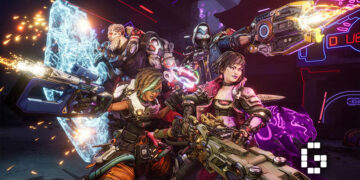

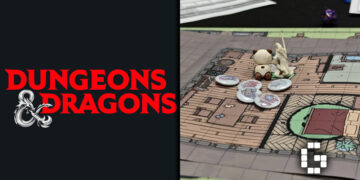

![[GIVEAWAY] SHINOBI: Art of Vengeance Delivers the Deep Combat Modern Action Gamers Want](https://cdn.gamerbraves.com/2025/08/Shinobi_Feature_FI-360x180.jpg)
